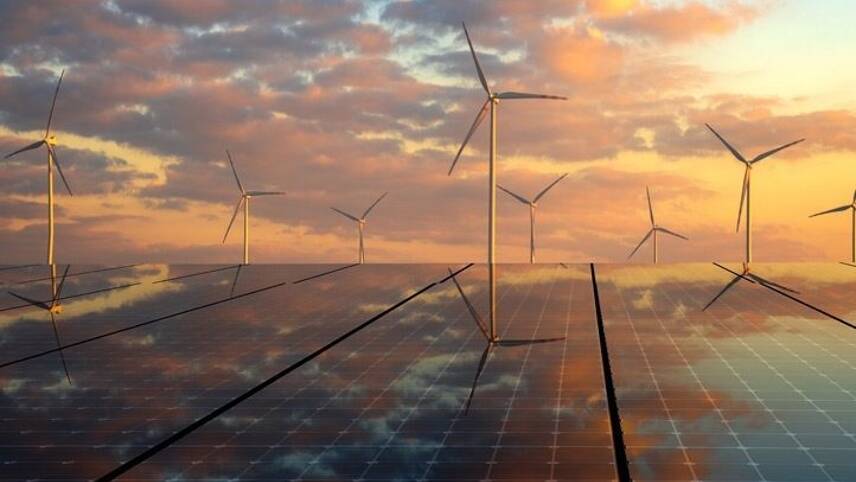Register for free and continue reading
Join our growing army of changemakers and get unlimited access to our premium content

New research published on Thursday (1 June) from the International Energy Agency (IEA) found that renewable power capacity is expected to increase by 33% this year – a new record.
Total renewable electricity capacity looks set to rise to 4,500GW, which is equal to the total power output of the world’s two largest polluters, China and the US, combined. Capacity additions in 2023 will increase by 107GW, the largest recorded increase ever, to more than 440GW in 2023.
The increase will be led by solar and wind and nations move to combat rising energy costs and improve energy security following Russia’s invasion of Ukraine.
The IEA states that renewable capacity additions in Europe have been revised upwards by 40% from before Russia’s invasion, signalling that many countries are turning to renewables to reduce reliance on natural gas from Russia.
Installed solar and wind between 2021 and 2023 is estimated to have saved European nations more than €100bn by reducing fossil fuel generation, the research notes. The IEA also states that wholesale electricity prices in Europe would have been 8% higher last year without that additional renewable capacity.
“Solar and wind are leading the rapid expansion of the new global energy economy. This year, the world is set to add a record-breaking amount of renewables to electricity systems – more than the total power capacity of Germany and Spain combined,” IEA’s executive director Fatih Birol said.
“The global energy crisis has shown renewables are critical for making energy supplies not just cleaner but also more secure and affordable – and governments are responding with efforts to deploy them faster. But achieving stronger growth means addressing some key challenges. Policies need to adapt to changing market conditions, and we need to upgrade and expand power grids to ensure we can take full advantage of solar and wind’s huge potential.”
Alongside the global energy cost crisis, enabling policies like the US Inflation Reduction Act and the European Commission’s Net-Zero Industry Act has helped drive clean energy investment.
These policies will not be enough to dislodge China as the leader in new clean energy additions. The IEA states that China will account for almost 55% of global renewable power capacity additions in 2023 and 2024.
Solar and wind
Solar PV additions will deliver the biggest jump in capacity additions, accounting for 66% of the annual increase in power capacity. The IEA predicts solar installation levels to increase further in 2024.
Manufacturing capacity for solar will also more than double to 1,000GW by 2024, led by China, the US and India.
The IEA reported last week that investments into solar alone look set to exceed that of oil production for the first time ever, with more than $1.7trn set to be funnelled into clean energy solutions in 2023. This will mean that manufacturing levels for solar by 2030 will be more than enough to meet the IEA’s scenario for required solar output to meet net-zero emissions by 2050.
The IEA found that around $2.8trn looks set to be invested in global energy this year, of which more than $1.7trn will be spent on clean energy technologies – including renewables, electric vehicles (EVs), nuclear power, grids, storage, low-emissions fuels, efficiency improvements and heat pumps.
The IEA warns that fossil fuel investment in 2023 will be more than double the levels need in 2030, under the Agency’s net-zero emissions scenario for 2050. With global coal demand meeting an all-time high in 2022, investment this year will reach nearly six times the levels envisaged in 2030 in the Net Zero Scenario.
As for wind power, additions are forecast to rebound in 2023, increasing by almost 70% annually following a couple of years of stagnation. However, the IEA states that further growth next year will depend on whether governments can improve legislative conditions to overcome permit and design issues, unlocking streamlined supply chains in the process.
Apply now for the edie Net-Zero Awards!
Readers interested in the above article may be keen to enter edie’s new Net-Zero Awards.
From breakthrough innovations and solutions through to industry-leading carbon reduction programmes and bold collaborative initiatives – this is THE awards scheme have your net-zero efforts and achievements recognised by thousands of businesses and climate experts.
The Net-Zero Awards have been launched as a sister scheme to the long-running edie Awards in response to the surge of innovation and corporate action to accelerate the net-zero transition. The Awards are open to all organisations across the public and private sectors and of all sizes from the largest multi-nationals to the smallest micro-businesses. Winning an inaugural Net-Zero Award empowers teams, inspires stakeholders and ultimately accelerates the corporate net-zero transition.
Applications are open until 14 July and awards will be presented on 15 November.
Click here for full information and to apply.


Wind is fine, when it blows, but it entirely out of any control. when it dies for days on end, natural gas comes to our aid, thanks to its flexibility.
But this disadvantage is never mentioned, to my knowledge.
Energy storage, on a country-wide level is fiendishly difficult.
But hardly gets a mention.
These seem to me to be real problems, are there any answers or even routes to even one, out there?
Love to hear!!